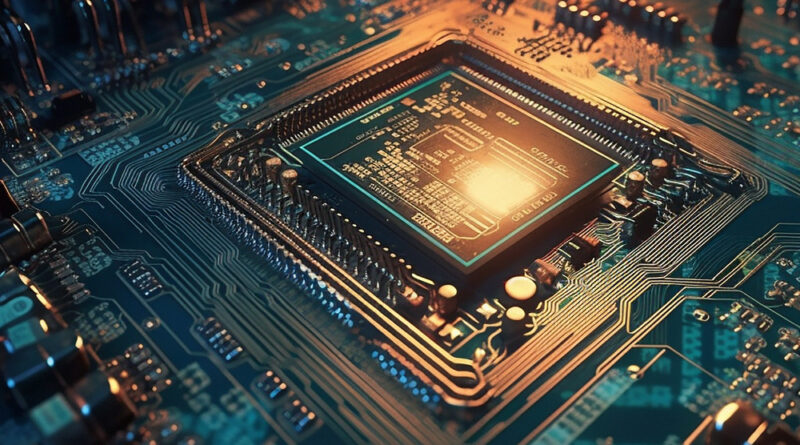From GPUs to Texas Plains: Why Trump Is Praising Nvidia’s U.S.‑Built AI Supercomputers
President Trump’s recent social media buzz about “A.I. SUPERCOMPUTERS” built on American soil has put Nvidia in the spotlight—and raised big questions about where tomorrow’s most powerful machines will be made, and why.
What Exactly Is an AI Supercomputer?
Traditionally, supercomputers are colossal clusters of central processing units (CPUs) that tackle complex tasks—think weather forecasting or molecular modelling—at speeds far beyond a typical PC. But Nvidia’s vision of an AI supercomputer swaps many of those CPUs for hundreds (or even thousands) of graphics processing units (GPUs). GPUs excel at parallel calculations, making them ideal for training large-scale artificial‑intelligence models such as voice assistants and chatbots.
Key takeaway: AI supercomputers aren’t an entirely new concept—they’re a degree up in performance, optimized for machine learning rather than purely scientific simulations.
Why GPUs Matter for AI
-
Parallel Processing Power: A single GPU can handle thousands of simultaneous calculations, slashing training times for neural networks.
-
AI‑First Architecture: Unlike standard servers or GPU‑light clusters, these AI servers are tuned for tasks like image recognition, natural language processing, and generative AI.
-
Big Data Workhorses: Companies such as Apple and Microsoft now rely on GPU farms—often called data centers—to power their AI services.
Why “Made in America” Is More Than Just a Slogan
You might wonder why assembling AI servers in the U.S. makes sense when so many tech products are manufactured overseas. Here’s the breakdown:
-
Price Insensitivity: Cloud giants and enterprise clients are willing to absorb higher U.S. labor and overhead costs in exchange for secure, on‑home‑turf production.
-
Automation Advantage: AI server assembly is highly automated, requiring fewer manual workers than smartphone factories—meaning higher U.S. wages are less of a barrier.
-
Engineering Edge: The critical value in AI hardware lies in chip design, integration, and software tuning—areas where America retains a competitive lead.
Nvidia’s U.S. Manufacturing Footprint
To bring this vision to life, Nvidia has secured over 1 million square feet of manufacturing and testing space:
-
Arizona: Blackwell GPU chip fabrication and testing
-
Texas: AI server assembly—partnering with Foxconn in Houston and Wistron in Dallas
These strategic locations leverage existing supply chains, skilled workforces, and proximity to Mexico—currently the U.S.’s top server importer.
Why Texas Is Becoming an AI Hub
-
Logistics & Energy: Texas offers abundant power and a business‑friendly climate, both essential for energy‑hungry data centers.
-
Cross‑Border Synergy: Nearly 70% of U.S. server imports already come from Mexico, making Texas a natural next step.
-
State Support: Governor Greg Abbott’s office recently hosted Taiwanese AI manufacturers to discuss multi‑billion‑dollar expansions.
Additionally, the so‑called “Stargate Project” aims to pour $500 billion into Texas‑based AI infrastructure, starting with data centers in Abilene. Even Apple has announced a new Texas factory—further cementing the Lone Star State as a tech powerhouse.
Proceed with Cautious Optimism
While Trump’s announcements underscore bold ambitions, industry analysts urge patience. Building, testing, and scaling AI supercomputers is a complex endeavour. Key questions remain:
-
Timelines: How quickly can U.S. plants reach full production?
-
Supply‑Chain Resilience: Can domestic operations match the efficiency of established overseas facilities?
-
Geopolitical Headwinds: Will export controls and international competition slow progress?
The Future of American AI Infrastructure
Nvidia’s push to manufacture cutting‑edge AI supercomputers on U.S. soil marks a pivotal shift in global tech supply chains. By pairing world‑class chip design with domestic assembly—and by tapping into Texas’s vast resources—these initiatives could redefine America’s role in the next wave of artificial intelligence.
As these GPU‑powered behemoths emerge from Arizona deserts and Texas factories, the question isn’t just “What is an AI supercomputer?” but “What will America build next?”
Photo Credit: DepositPhotos.com

